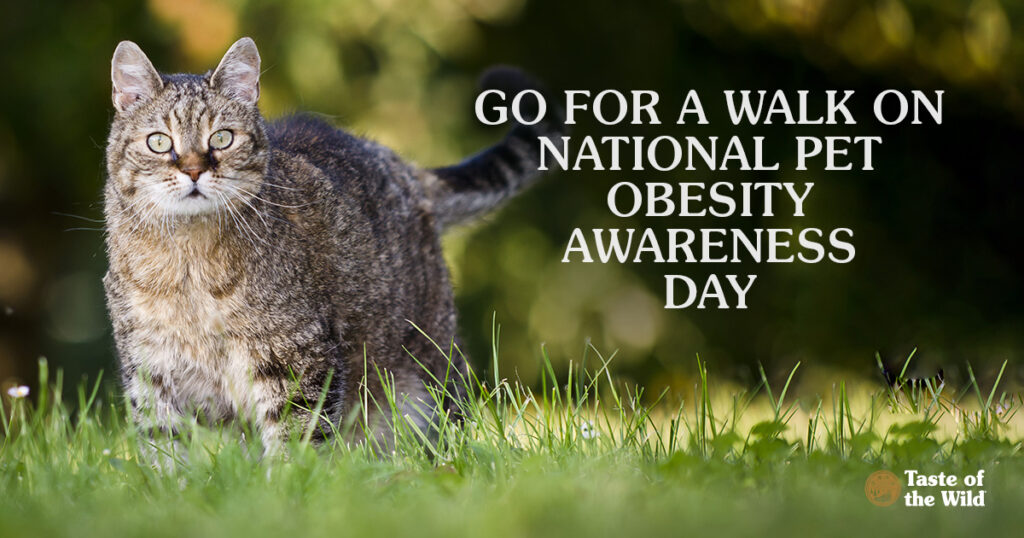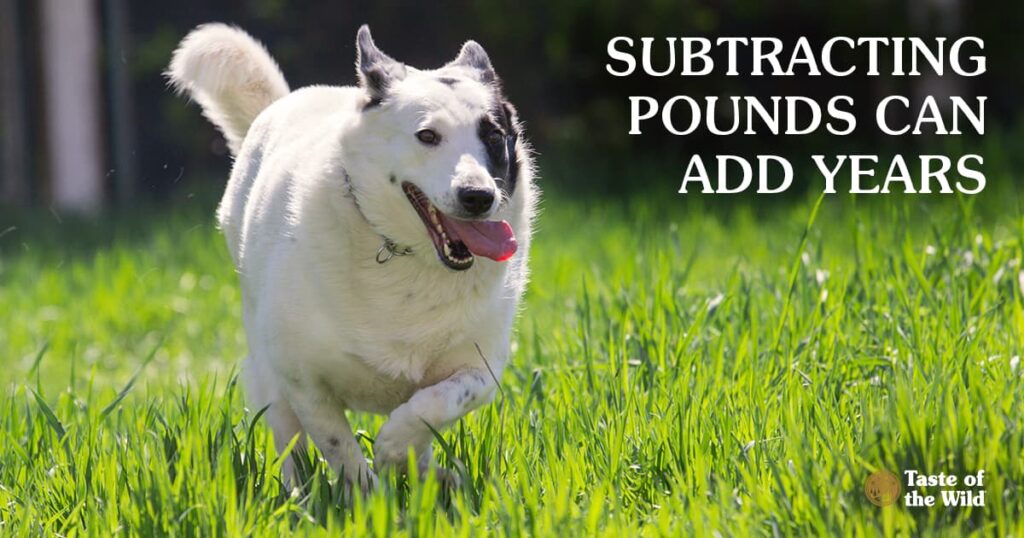
Has your pet ever been fat shamed? Maybe it was a casual dig at the dog park. Or an insensitive remark on social media. It can be easy to underestimate how many extra pounds your pet may be carrying because, frankly, pet obesity has become the new normal. That is why we’re pointing out that tomorrow is National Pet Obesity Awareness Day. Pet obesity is nothing to take lightly!
About 59.5 percent of cats and 55.8 percent of dogs are considered overweight or obese, according to the Association for Pet Obesity Prevention (APOP). Obesity can contribute to diabetes, joint problems such as arthritis, difficulty breathing and even a shorter life span.
If you’ve got a pet who needs to take care of their weight, you’ll likely need to change their diet — including feeding them fewer human food treats. But increasing the exercise is equally important because you want your pet to lose fat while retaining or building muscle mass. How much exercise is healthy? Here are some tips to help your pet drop those unwanted pounds and earn the praise and admiration he or she deserves.
First stop: your veterinary clinic
Your veterinarian will weigh your pet and show you how to objectively determine your pet’s ideal weight. Together, you can make a plan on how to approach your pet’s weight loss. Your veterinarian may recommend a therapeutic weight loss diet or determine the right quantity of your current food to help your pet lose weight while still receiving all the nutrition they need.
The doctor will also check to see if your pet has any underlying conditions, such as hypothyroidism (low thyroid hormone) in dogs, which, when treated, can help with weight loss. He or she will also examine your pet for underlying heart or orthopedic conditions that may impact your pet’s exercise plan.
Gradual weight loss is best
Your pet shouldn’t lose weight too fast. As a general rule, a dog can lose about 1 to 3 percent of their body weight per month, while a cat can lose 0.5 to 2 percent per month, according to APOP. But this may vary depending on your pet’s breed and weight. Overweight cats who lose weight too fast and go off their food are prone to fatty liver disease, a serious and sometimes fatal condition. If your cat doesn’t eat for a day or two, contact your veterinarian.
Begin exercise gradually, too
Your veterinarian will typically recommend short exercise sessions, then gradually extend the length of these sessions as your pet loses weight. For overweight or arthritic dogs, low-impact exercises like walking and swimming are good because they put less stress on the joints than running and jumping. If your pet has arthritis, ask your veterinarian about medications to help your dog exercise pain free.
Start with short walks on flat terrain, gradually extending the walk and adding hills. Let your dog warm up and do their business, then gently increase the speed of your walk so your dog is getting some heart-pounding aerobic exercise. If your dog starts panting too much or lagging behind, that’s your cue to slow down a bit. Dogs that are overweight, especially those that are brachycephalic, or flat-faced, can have trouble breathing and become overheated easily. It’s best to walk these dogs in the cool of the morning or evening.
Depending on your dog’s health status, your veterinarian may recommend an exercise regimen of perhaps 30-minute walks five times a week. Each week, you can gradually increase the amount of aerobic time during the walk. If your dog tolerates that well, you can build up to twice-a-day walks or jogging.
Another alternative is to schedule regular appointments at canine rehabilitation clinics, where they can put your dog through the paces on regular or underwater treadmills. You can even make use of digital pet activity monitors to help monitor your pet’s daily efforts.
Cat fitness
Cats can be slightly more challenging to exercise, but you can start with 5-minute play sessions, chasing a laser pointer or feather toy. A cat tree can encourage your cat to climb and stretch its muscles. Food puzzles make your cat work for their meals and provide mental stimulation. Another alternative is to hide kibble in different parts of the house so your cat has to “hunt” for their meal.
Monitor progress with monthly weigh-ins
Whether you weigh your pet at the veterinary office or on your own scale, it’s important to make sure your pet is making weight-loss progress. Too much or too little weight loss suggests a call to your veterinarian, who can make adjustments in diet or exercise to keep your pet on track.


